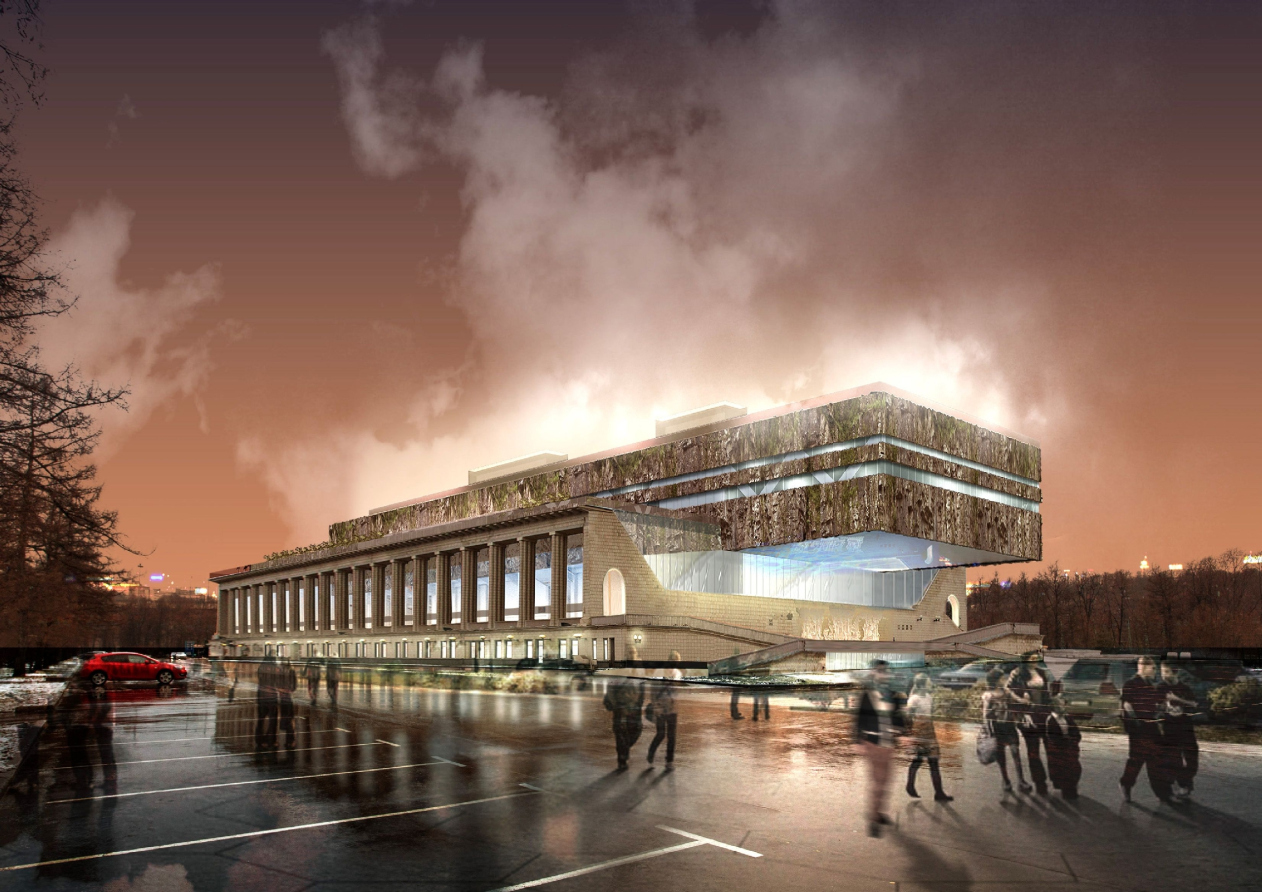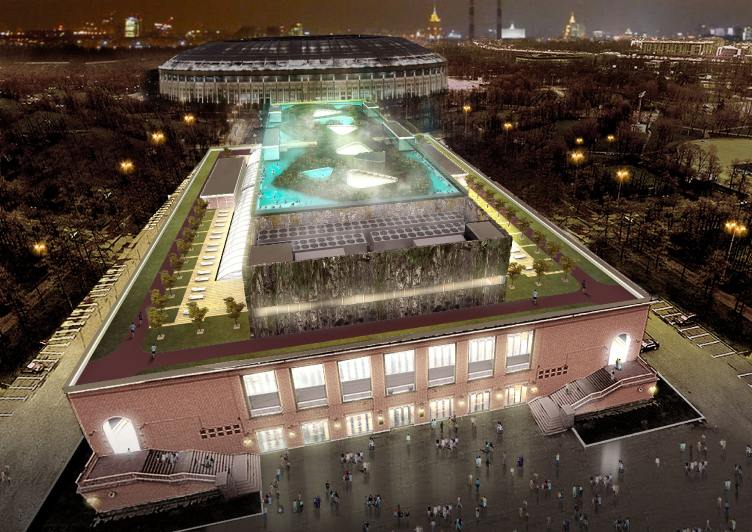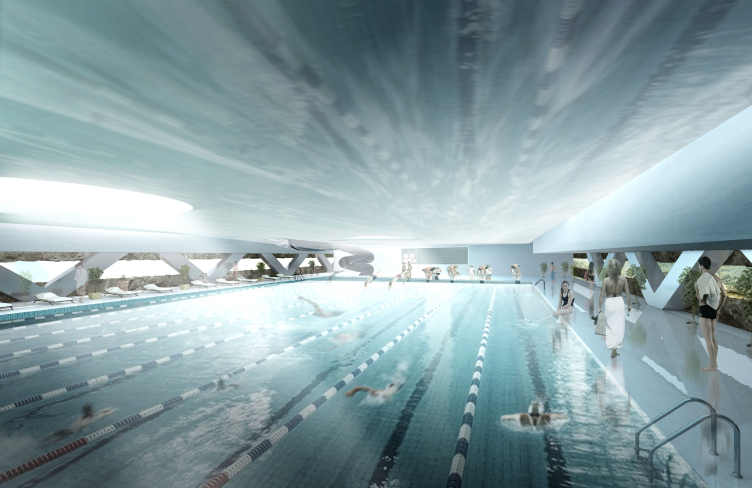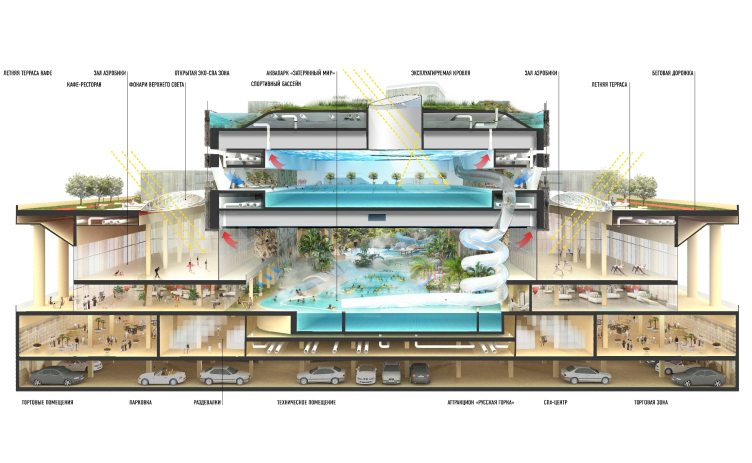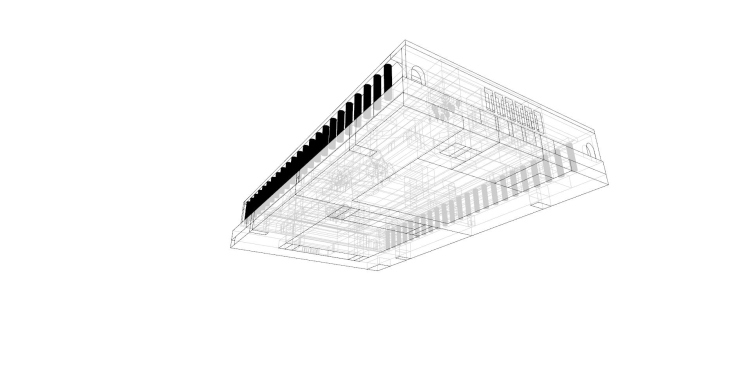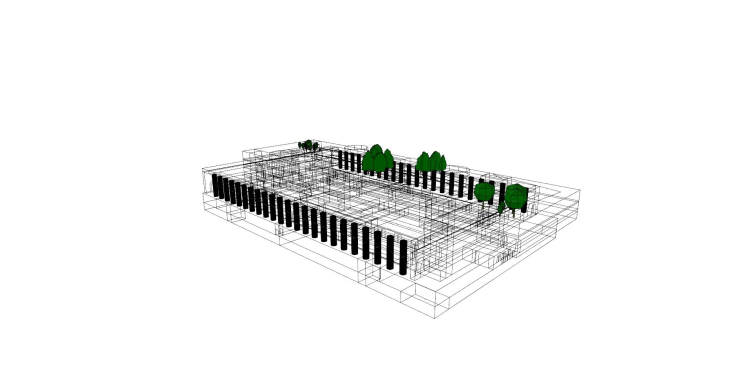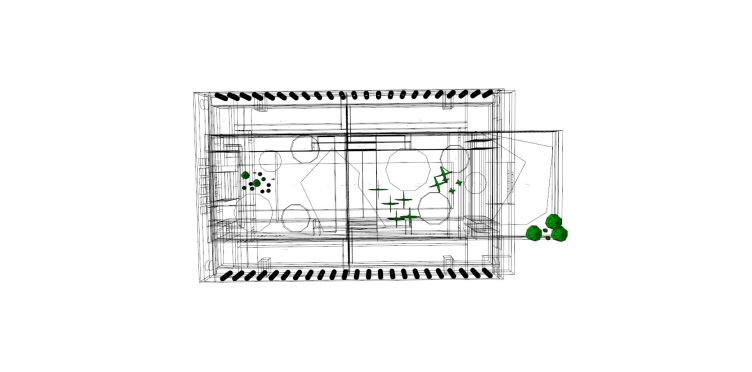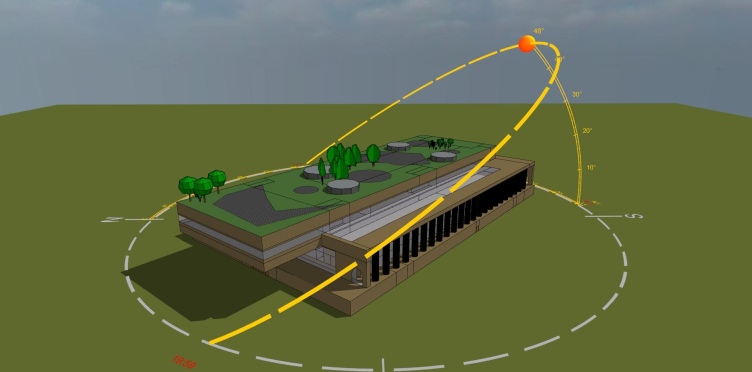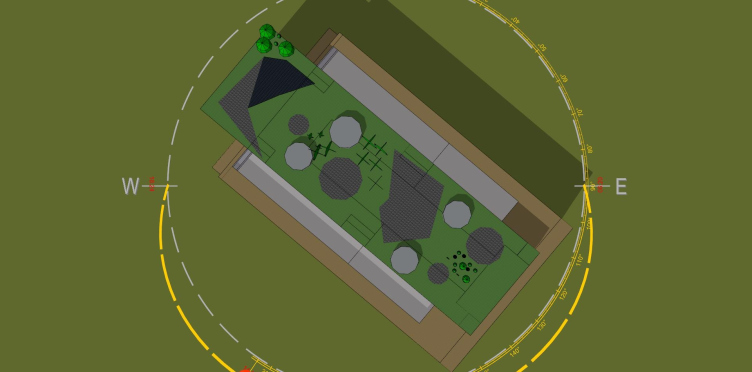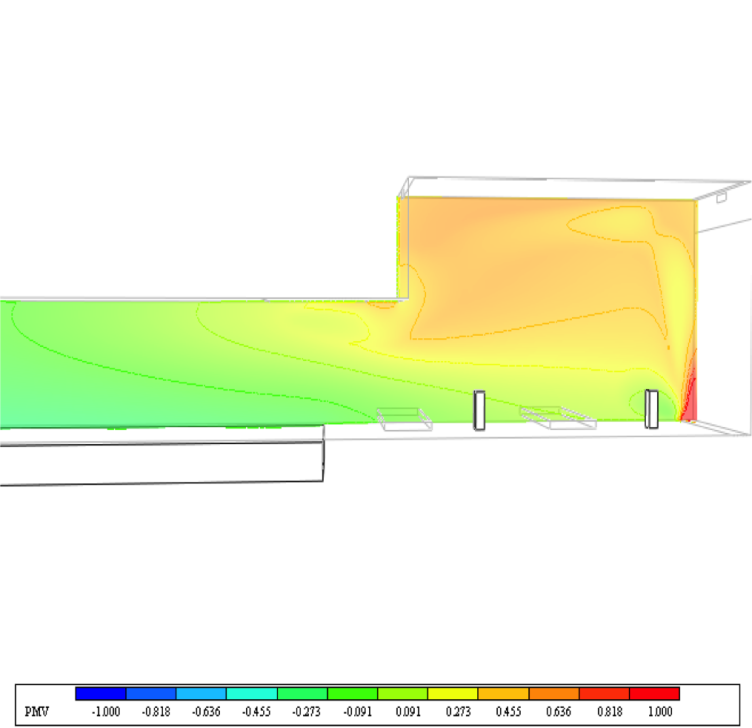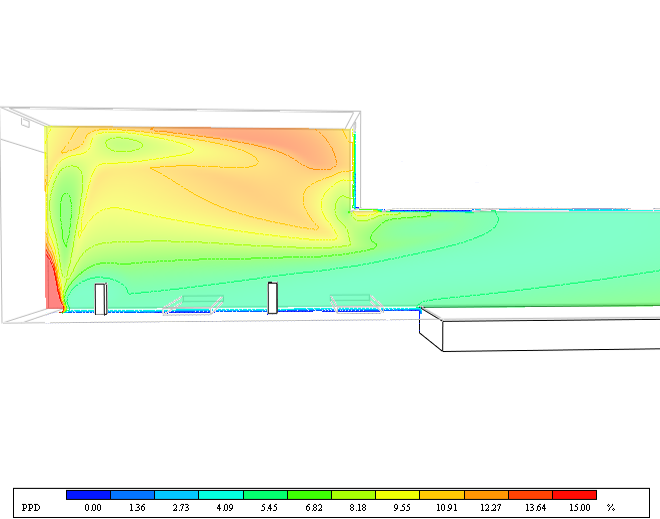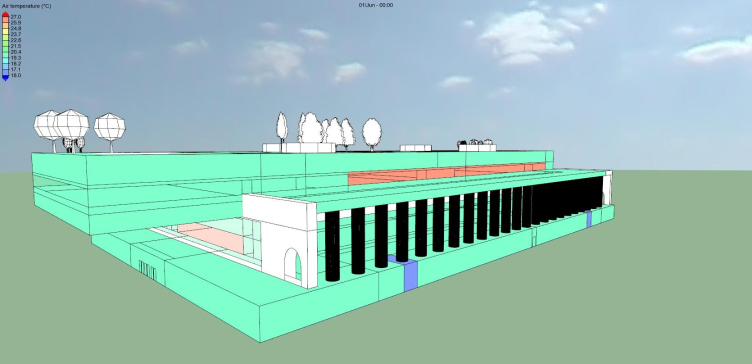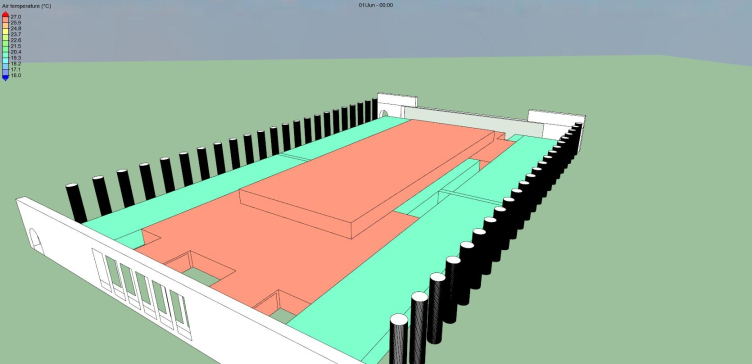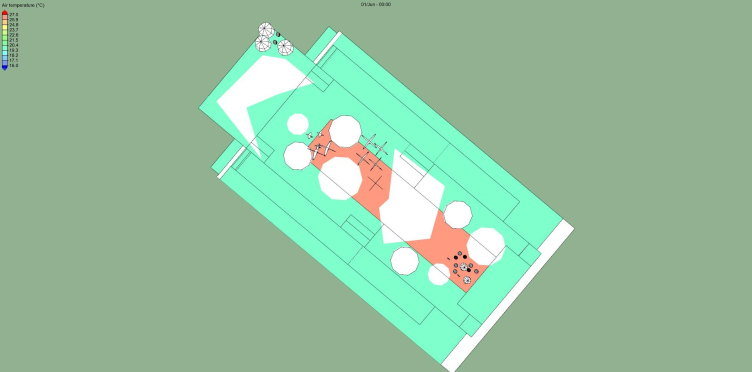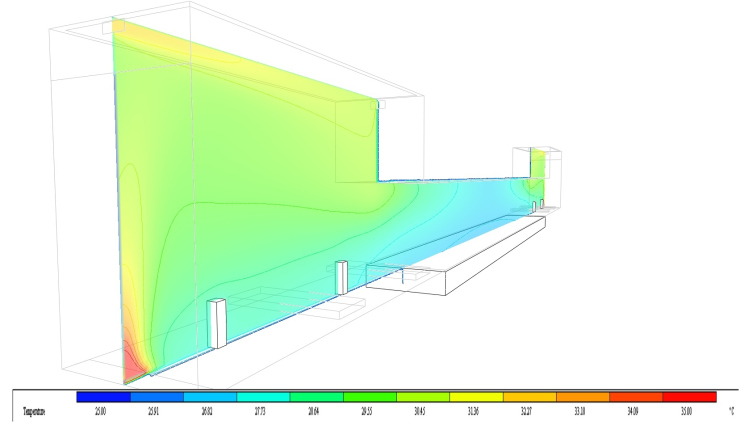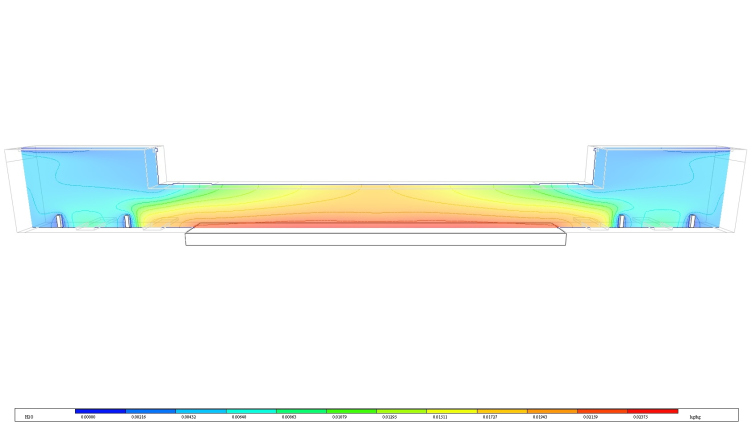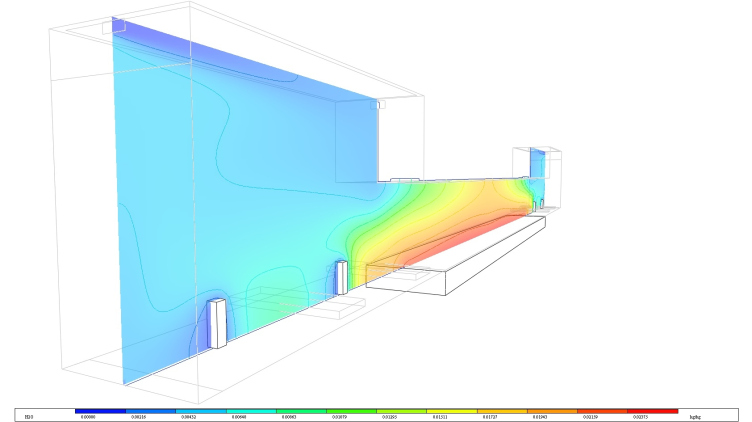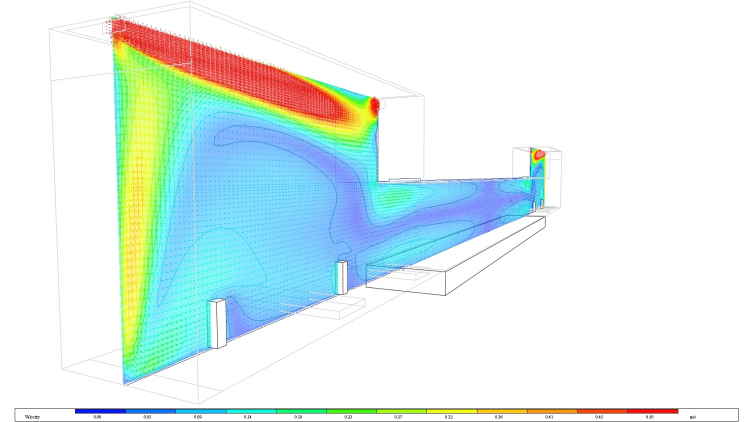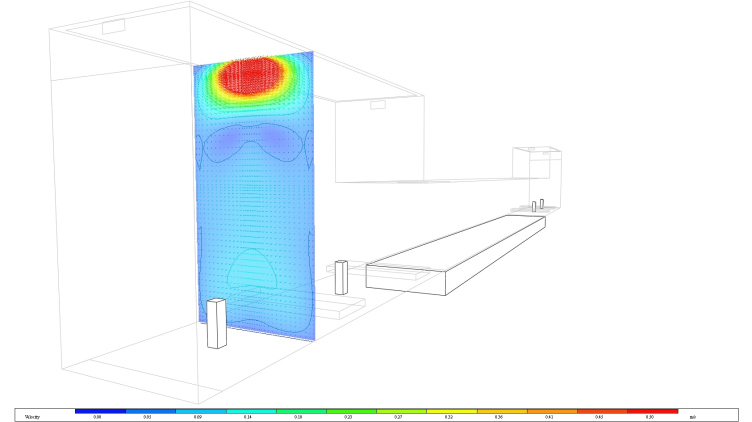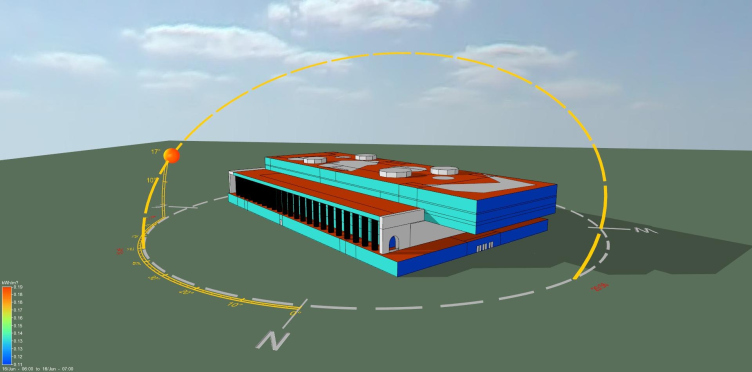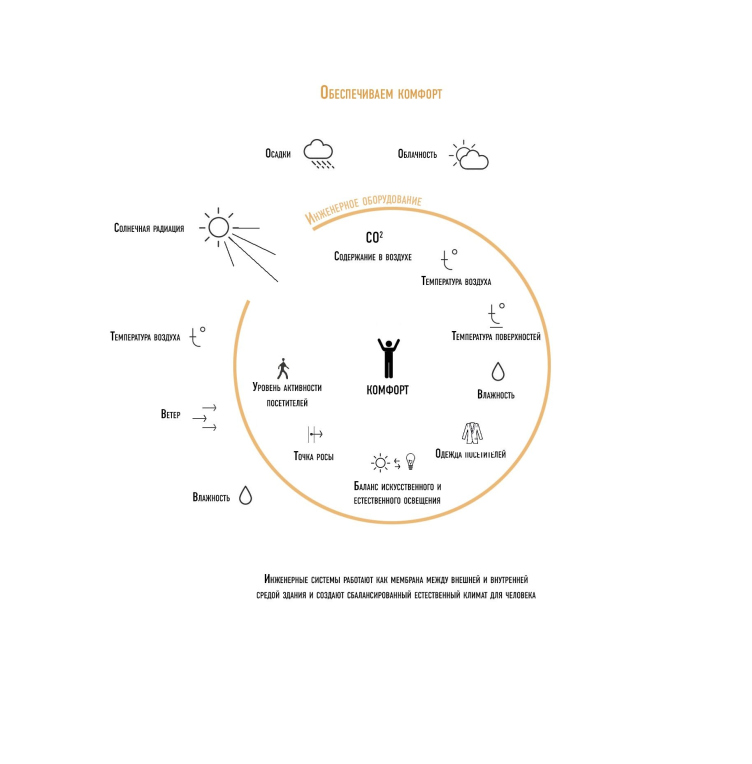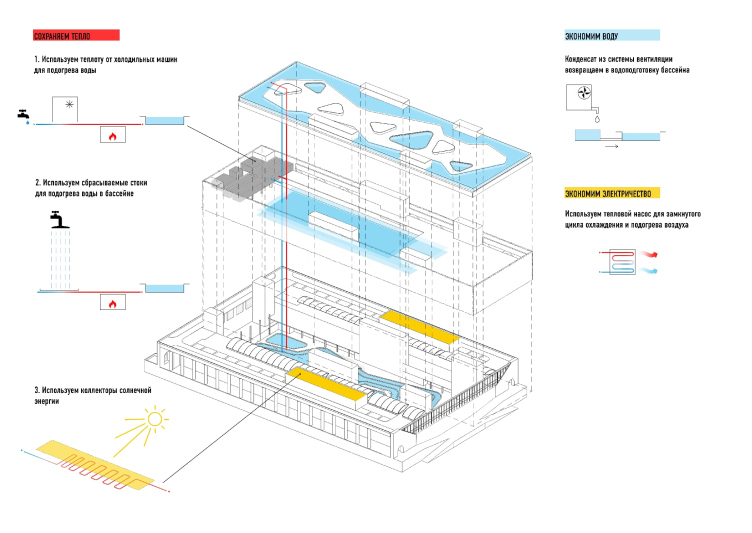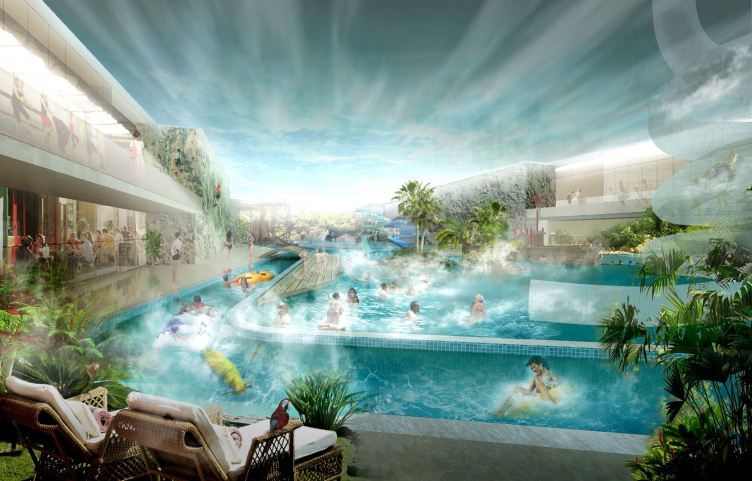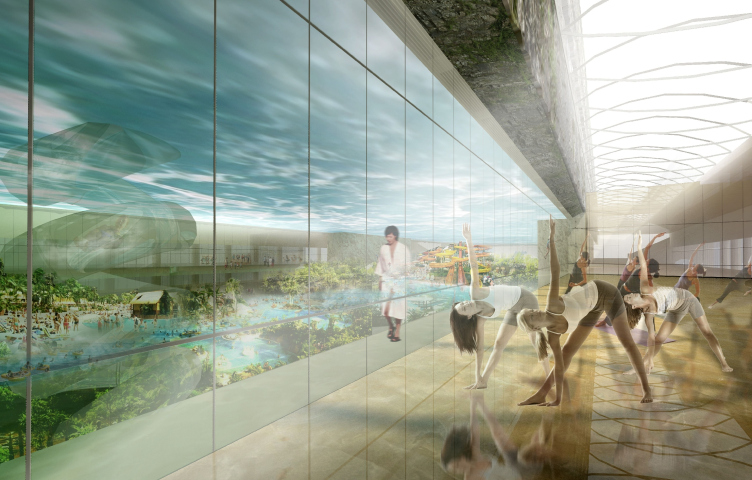Contest Project
The contest for the best concept of reconstructing the swimming complex of "Luzhniki" was organized in the spring of 2014 at the commission of Codest Company and we gave it a fairly detailed coverage. The architects were to revise the complex that was built in 1956 turning the open-air swimming pool into a covered aqua park, at the same time keeping facades as much intact as possible - they were a fine example of Stalin "empire" style. The contest consisted of two rounds, and the finalists who were fine-tuning their projects in the second round were required to come up with detailed proposals, including the engineering and economic ones: not the way that it is usually required in the case of architectural concepts that are usually more of a general construct nature.
Thus, the engineering part of the concept of "Lost World" project - proposed by the consortium headed by Asadov Architectural Bureau and developed by the experts of Engex Company - deserves special attention. We will remind you at this point that the project was about turning the "antiquated" Stalin peripteral building into a "romantic ruin" hiding inside of it the luxurious natural world of a cascade oasis. In terms of organizing its space, the climax of this multilevel garden is the block of premises that covers the existing complex, shifted in the direction of the Major Sport Arena and overhanging above the summer terrace.
Concept of reconstructing the swimming complex of "Luzhniki" © Asadov Architectural Bureau
Concept of reconstructing the swimming complex of "Luzhniki" © Asadov Architectural Bureau
Concept of reconstructing the swimming complex of "Luzhniki" © Asadov Architectural Bureau
Hiding a new volume inside the old walls, whimsically shifting it off at least one axis, is a technique that is not entirely new for the reconstruction projects but still capable of yielding some interesting results. And when the presence of the original building is marked not with walls but with a colonnade, the possibilities for the architects and the engineers are virtually unlimited - which, luckily, was the case here.
The Comfort Concept
As far as the engineering solution is concerned, it is all about forming an inside environment that must be as comfortable and energy-efficient as possible. In order to achieve that, the Engex experts had to divide the building's engineering systems into three levels based on the differences between the functions of the swimming pools: Water Park on the first floor, the sport pool on the fourth floor, and expo spa zone on the roof. In accordance to its mode of operation and the specifics of the technical requirements, each swimming pool must be served by its own independent system situated on the same level with it. This was the paramount condition.
Concept of reconstructing the swimming complex of "Luzhniki" © Asadov Architectural Bureau
Arrangement of the building's premises in accordance with their functional purpose and the engineering approaches © Engex Engineering Bureau
Arrangement of the building's premises in accordance with their functional purpose and the engineering approaches © Engex Engineering Bureau
Arrangement of the building's premises in accordance with their functional purpose and the engineering approaches © Engex Engineering Bureau
Assessing these environment-forming independent elements and seeing the situation in general was made possible by the building energy modeling - first it was used for finding the heating parameters of the entire volume of the building and then it was used for developing the algorithm of defining the operational parameters of its engineering systems and equipment.
3D model of the swimming complex and its interaction with Moscow's climatic conditions © Engex Engineering Bureau
3D model of the swimming complex and its interaction with Moscow's climatic conditions © Engex Engineering Bureau
Building energy modeling is not just about analyzing the parameters of independent systems - it also implies accurately defining their operation in various temperature and climatic modes, and under different functional loads. At the stage of developing the architectural concept, this process was, of course, treated in a rather general way: the calculation was only done for the basic extreme months (in Moscow these being February and July), and for the workloads during the opening and closing hours. The experts took into consideration the level of solar radiation during different seasons, as well as the possibility and the necessity of adjusting the temperature inside of the complex during the day. Meanwhile, in spite of a fair share of generalization, the designers' goal was to achieve a high level of accuracy of calculation, for which they used two internationally recognized indexes of evaluation of thermal comfort. The first one, PMV (Predicted Mean Vote), allows for forecasting the average evaluation of the comfort of the environment done by the visitors; the index consists of seven points, from minus three to plus three, and, in this case, according to the calculations, it must oscillate within the limits of one point in the neighborhood of the "perfect" zero, between -0.5 and +0.5. The second index, PPD (Predicted Percentage Dissatisfied), evaluates the percentage of possible dissatisfaction of the guests of the water park and their negative comments; according to the authors, it must not exceed 10%. Thus, the calculations are aimed at creating a predictable and controllable environment whose comfort is not a subjective but objective criterion.
Parameters of comfort evaluation: PMV (Predicted Mean Vote) and PPD. Optimum conditions: -0,5 < PMV<+0,5 © Engex Engineering Bureau
Parameters of comfort evaluation: PMV and PPD (Predicted Percentage Dissatisfied). Optimum conditions: PPD < 10% © Engex Engineering Bureau
Individual microclimate parameters © Engex Engineering Bureau
Individual microclimate parameters © Engex Engineering Bureau
Efficient Approach
It is perfectly obvious that the approaches to creating an environment that is comfortable to be in must be totally obvious in the office part of the building and in the swimming pool zone. For the business part of the complex, the main indicator of the inner microclimate is the air temperature, and the designers, accordingly, proceed from the strength of the flow of people whose presence in a room inevitably increases the air temperature inside of it. The critical characteristic for the "wet" premises, as well as for the swimming pools, is the air humidity: this determines the volume of the vapor rising from the water surface. Paradoxical though it may sound, it is the combination of these seemingly irreconcilable functions within one closed energy circuit that allows for using the heat of the hot office air in the swimming pools. At the same time, the architects also had to consider the fact that the building's main heat consumer is the very system of swimming pools and the system that heats the water for them. In the existing since 1956 structure of the building with an open-air water surface one could safely speak about the heat going into the environment - meaning, to waste. The locker rooms were only separated from the air outside by the heat curtains in the aisles, and the relatively comfortable environment in the pool area was created at the expense of the high water temperature: 27-29 degrees Celsius, while the expected water temperature for the new complex is 26 degrees.
Individual microclimate parameters © Engex Engineering Bureau
Temperature field in the swimming pool hall. The perimeter of the pool is heated by the convectors © Engex Engineering Bureau
Humidity © Engex Engineering Bureau
Humidity © Engex Engineering Bureau
In order to save on the power and water consumption, even the purified condensed water that forms with the cooling of the air will be fed back into the pool, while the warmth of the "gray drains" - the disposed water from the swimming pool - will be used for heating the inflow of air and the water inside of it.
***
Because of the high air humidity, the main problem of any swimming pool is the formation of condensate on the cold surfaces of its stained-glass windows and the outside glass surfaces. In order to avoid that, the surface of the glass is blown over by a stream of warm air from the air dispensers installed in the floor - on the same principle of the "air curtain". As for the ventilation airflow, it is controlled by the humidity sensors - this allows for adjusting the expenditure of the air and the operation of the electrical drives in accordance with the main parameter - meaning, the level of humidity because of which people basically come to this blessed oasis.
Field of the air speed in the pool hall. Feeding of the slow-speed air into the recreation area. Blow-over of the stained-glass window © Engex Engineering Bureau
Field of the air speed in the pool hall. Feeding of the slow-speed air into the recreation area. Blow-over of the stained-glass window © Engex Engineering Bureau
In order to increase the level of comfort and avoid the risk of creating draughts in the main premises of the complex, as well as for organizing the inflow of air in the public swimming area, the architects use the system of displacement ventilation - the vertical air dispensers through which the inflow of air passes at a low speed. All these things are done with but one goal in mind - not to exceed the "predicted percentage dissatisfied" - the "good old" PPD. This is no place for dissatisfaction by any means.
Estimation of the influence of the solar radiation and the wind on the temperature mode of operation of the building © Engex Engineering Bureau
Estimation of the influence of the solar radiation and the wind on the temperature mode of operation of the building © Engex Engineering Bureau
Architecture of the Light
The architectural proposal by Asadov Studio provided for a lot of ambient light: both at the expense of the light coming from above and from the sides (the stained-glass windows). In order to make the most of it, some groups of spotlights - most of which are installed along the perimeter of the building - are smoothly regulated by the light sensors to only be an addition to the ambient light during the day. At the same time, the lights on top of the existing building are equipped with solar collectors that accumulate extra energy - at the expense of the solar radiation. This is done by using the moisture-resistant and transparent ETFE film with photo galvanic elements upon it that transform the direct light into the ambient kind. At night, however, the building does not need the daytime temperature, and the authors proposed to gradually lower the temperature during the closing hours. In the case of nighttime events, this energy-saving mode can be disabled manually. And in the morning - on a regular day - the temperature in the premises is again raised to the operational value because the heating of the complex starts two hours ahead of the first visitors coming in.
Concept of reconstructing the swimming complex of "Luzhniki" © Asadov Architectural Bureau
Concept of reconstructing the swimming complex of "Luzhniki" © Asadov Architectural Bureau
Balance of the Interests
Despite the high-profile status of the project and the doubtless ingenuity of the concept, the architects had to forego a whole number of the engineering solutions they came up with - because some of them turned out to be prohibitively expensive. This category even includes the seemingly indispensable for any swimming pool "gray drain" processing technology for the recycling of the used water. Thus, the whole engineering system became the result of the architects searching for the reasonable balance between the comfort of the environment, energy conservation, and the financial efficiency of the project.
Concept of reconstructing the swimming complex of "Luzhniki" © Asadov Architectural Bureau
Concept of reconstructing the swimming complex of "Luzhniki" © Asadov Architectural Bureau
